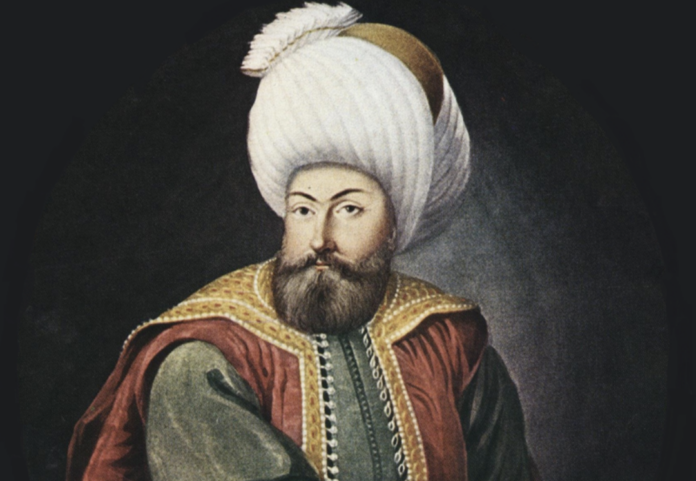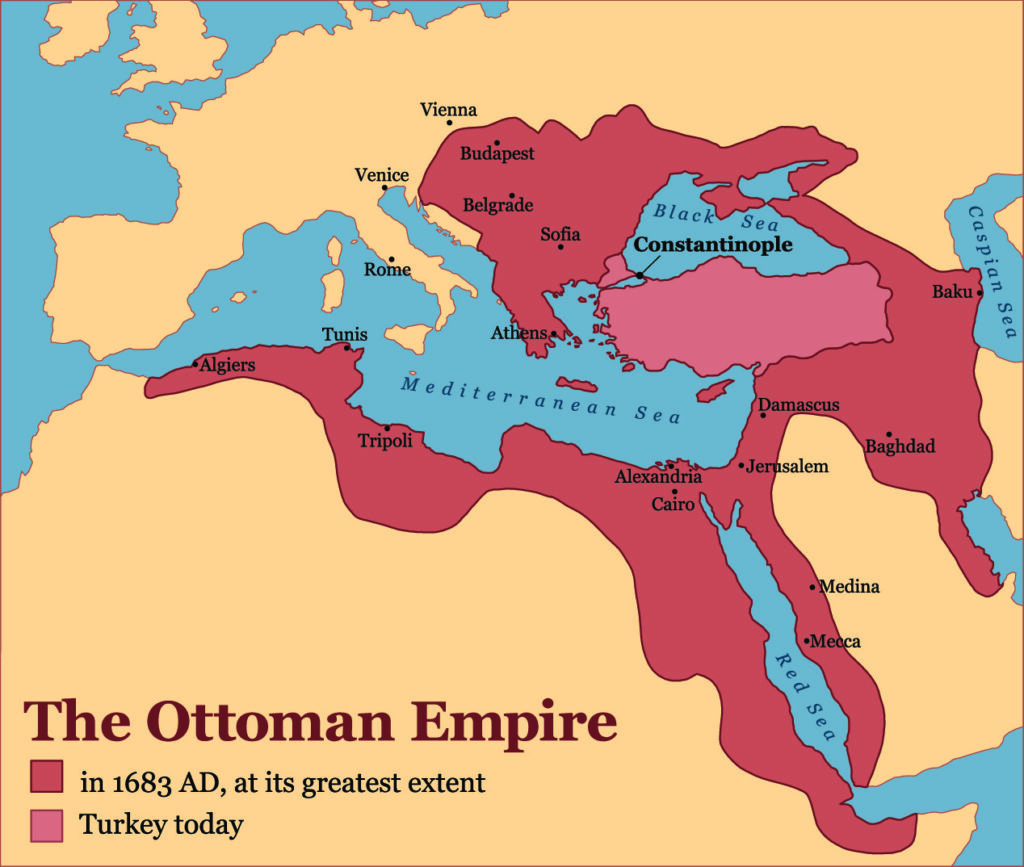Today marks the 697th anniversary of the death of Osman Ghazi, the founder and first ruler of the Ottoman Empire, which would eventually grow into one of history’s greatest empires.
Osman I was the leader of the Kayi tribe and founded the Islamic Ottoman dynasty at the end of the 13th century in Sogut, an area in present-day northwestern Türkiye, from which it would expand and rise.
Founded in 1299, the Ottoman Empire gradually became a world power spanning Africa, Asia and Europe, lasting over 600 years, and wielding influence over the Middle East, Balkans and the world.
Osman was a skilled military leader who effectively organised and led his followers, known as ghazis, in their conquests. His military prowess and successful campaigns laid the groundwork for the future military strength of the empire.
Under Osman’s rule, the territory controlled by the Ottomans transformed into a new and independent state. This marked the beginning of the Ottoman state’s development and eventual expansion.
Osman is also believed to have been a fair and just ruler, known for his tolerance toward different religious and ethnic communities.
He incorporated diverse populations into his expanding state and developed an administrative system to govern them effectively.
Subscribe to our newsletter and stay updated on the latest news and updates from around the Muslim world!
Born in 1258 in Sogut, Osman was the son of Ertugrul, a chieftain from the Kayi tribe under the command of the Seljuks, and grandson of Suleyman Shah.
After the death of his father in 1280, Osman inherited his position as bey, or chief, formed his forces and began marching towards small settlements in Byzantine territory. He established a small beylik, or principality, and formed a new order in the region.
Osman was a nominal vassal to the Seljuks — ruled from their capital city of Konya in central modern-day Türkiye — until he declared his independence and started taking over Byzantine land in 1299 following the disintegration of the Seljuk dynasty.
Following the Mongol defeat of the Seljuks in 1293, Seljuk territories quickly divided into small beyliks, led separately by various tribes, including the Kayi.
Taking advantage of the disintegration of the Seljuk dynasty, Osman I quickly expanded his territory through Anatolia. The Ottomans were at the time a chief rival to the Byzantine Empire, which was based in the city of Constantinople — today’s Istanbul — roughly 150 kilometers (about 93 miles) northwest of Sogut on the other side of the Sea of Marmara.
In 1298, Osman captured the town of Yarhisar, as well as Bilecik, where he moved the centre of his principality.
He gained control of the Inegol region in 1299 and a sermon was delivered in his name in Karacahisar castle. This is widely accepted as the date when the Ottoman Empire was founded.
Osman then laid siege on the city of Iznik (also known as Nicaea) in 1301 and on Bursa a year later. Iznik, fortified with a city wall, and protected by a large garrison as an important administrative hub and former Byzantine capital, was eventually conquered in 1330.
But due to illness, he handed over the leadership of the principality to his son Orhan Ghazi in 1324. Osman I died just before the capture of Bursa city in 1326, following a siege of 24 years.
By the end of his reign, Osman had almost doubled the size of the Ottoman realm. His last wish as a ruler was to take Bursa.
Osman Bey’s body was buried in Sogut and reinterred in Bursa in 1326 in line with his will.
The father of seven sons, Osman was married twice in his life. Succeeding him, his son Orhan Ghazi captured more major cities in present-day northwestern Türkiye.
The Ottoman Empire
In the years, decades and centuries after Osman’s death the Ottomans rapidly expanded their territory, conquering large parts of Anatolia, the Balkans, and the Middle East. Constantinople (modern-day Istanbul) was captured in 1453, marking the end of the Byzantine Empire.
The empire’s rulers held the title of “Caliph,” which symbolised their leadership in the Islamic world.
The Ottoman legal system was based on Islamic law. Shari’ah principles were applied in various aspects of governance, including family law, contracts, and property rights.
The empire reached its peak during the 16th and 17th centuries under rulers like Suleiman the Magnificent. This period is often referred to as the “Golden Age” due to significant military victories, administrative reforms and cultural achievements.
But starting in the late 17th century, the empire faced several challenges, including economic problems, internal strife and military defeats. It began to lose territories and influence.
In the 19th century, the Ottomans initiated a series of modernisation reforms known as the Tanzimat. These aimed to strengthen the empire’s institutions, improve administration and introduce legal and social changes.
The empire sided with the Central Powers during World War I, leading to its defeat. After the war, the victorious Allied powers partitioned the Ottoman territories, and in 1922, the empire officially ended, replaced by the secular Republic of Turkey in 1923.
SOURCE: AA and 5PILLARS












![24 Hour Road Trip Through Free Syria [Short Film]](https://5pillarsuk.com/wp-content/uploads/2025/02/IMG_5907-218x150.jpg)











